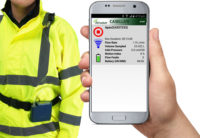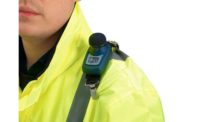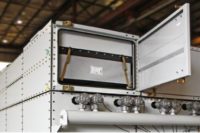With the focus for many businesses dealing with the ongoing Covid-19 global health crisis beginning to shift to ‘the new normal’ and returning to the workplace, questions are being asked by employees and employers alike around how workplaces will be made, and kept, safe.
According to a poll of US employees, 54% shared concerns about exposure to Covid-19 in the workplace. Employers can take assurance, however, in the fact that 71% of those polled have confidence that their employers can bring them back to work safely.[1]
Covid-19 is a health hazard that will necessitate new ways of working for some time to come, with one of the primary methods to limit the spread of the virus being maintaining social distancing of at least 6 feet (2m) between people.[2] While Covid-19 is a primary concern, and must be consistently monitored in all workplaces, it does not mean that the ‘old’ hazards of many workplace environments have disappeared.
When reintroduced into workplaces, it is essential that employers and employees continue to observe monitoring procedures for other risks to health, including noise, dust and vapor hazards. Technological advancements in monitoring methods for these hazards have presented unintended possibilities for aiding in the fight against Covid-19 – namely, personal monitoring equipment where measurements can be started, and the data checked remotely without disturbing the wearer.
It is important that employers establish protocols that allow workers to minimize close contact and ensure social distancing throughout a shift as much as is possible, while continuing hazard monitoring with minimal disruption to either procedure. Whether individual workplaces will be adapting social distancing into existing workflows, or changing workflows to introduce social distancing measures, flexibility of monitoring equipment will make either approach much easier to integrate.
Body-worn monitoring equipment, such as the dBadge2 noise dosimeter or Apex2 and VAPex personal sampling pumps, allow individual units to be issued to employees in a controlled way; collected from a demarked area at the start of a shift that allows a restricted number of employees in and out at any one time, maintaining a social distance. This method can then be used for employees to deposit units at the end of a shift, ready for thorough cleaning and disinfection.
Once equipment has been issued, real-time results can be checked remotely throughout the day. Connectivity is key; advancements such as integrated Bluetooth connections allow dosimeters and pumps to accessed remotely up to a distance of 25m away (over 12 times the suggested social distancing minimum of 2m). This minimizes both worker disruption during a working day and potential close contact levels, increasing peace of mind for employees and employers alike.
As well as real-time data such as battery charge level, flow rate, run time and volume sampled, safety managers are able to capture full, accurate reports of a monitored period and download these reports remotely via App connectivity, with examples including the Casella AirWave app.
With the ability to overview and download data from multiple devices, managers are given a clear picture of hazards across the workplace without having to interact with monitoring units (and the employees wearing them) directly. Utilising the app in conjunction with a sampling pump and an air flow calibrator, like the Casella Flow Detective, allows users to calibrate monitoring devices and check results remotely, giving confidence in results and minimizing physical interactions from the start of sampling to completion.
“When designing our personal monitoring devices, including the dBadge2 dosimeter range and the VAPex and Apex2 sampling pumps, we included remote monitoring advancements like App connectivity and integrated Bluetooth to address the challenges employers and employees faced with workplace hazard monitoring at that time,” explains Tim Turney, Casella’s global marketing manager.
“We couldn’t have predicted the challenges that Covid-19 would bring to those making workplaces safe, but through prioritizing flexibility and user-focused features as part of our designs alongside safety, we’ve given users the ability to adapt to socially distanced working and for personal exposure monitoring to continue for these traditional workplace hazards.”
To find out more about Casella’s range of life changing monitoring technology, visit www.casellasolutions.com



